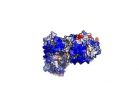(Press-News.org) Stroke is a frequent and dreaded complication of atrial fibrillation. But predicting which of the estimated six million Americans with a-fib are at highest risk has long challenged physicians weighing stroke risk against the serious side effects posed by lifelong therapy with warfarin and other blood thinners.
Now researchers from Johns Hopkins performing sophisticated motion studies of heart MRI scans have found that specific altered function in the left atrium -- one of the heart's four chambers -- may signal stroke risk in those with a-fib and, possibly, those without it. The imaging technique combines standard MRI scans with a motion-tracking software that analyzes cardiac muscle movement.
Reporting April 27th in the Journal of the American Heart Association, researchers say the specialized tests can pave the way to more accurate risk-gauging models and more precise therapy among with highest likelihood of stroke. The current risk-assessment guidelines underestimate that risk in about 12 percent of people with afib who would benefit from prophylactic treatment with blood thinners, researchers say. At the same time, researchers add, averting overtreatment in lower-risk patients would prevent the rare but often-devastating brain bleeds that occur as a side effect of blood-thinners.
The study results, the research teams says, also cast doubt on the current clinical dogma that chaotic beating of the upper chambers of the heart during Am12trial fibrillation fuels the blood clot formation that causes stroke. That view, the team says, has failed to explain why many people with atrial fibrillation never have strokes and why many with history of atrial fibrillation have no evidence of abnormal rhythms within a month before the stroke.
"Our research suggests that certain features of the heart's upper left chamber that are easily seen on heart MRI could be the smoking gun we need to tell apart low-risk from high-risk patients," says lead investigator and heart rhythm specialist Hiroshi Ashikaga, M.D., Ph.D., assistant professor of medicine and biomedical engineering at the Johns Hopkins University School of Medicine.
The investigators say just how the suppressed function and altered anatomy of the left atrium cause stroke remains unclear, but say they have reason to believe these features reflect more sluggish blood flow that leads to clot formation and precipitates stroke.
"Our observations suggest that altered function in the left atrium of the heart may lead to stroke independently of the heart rhythm disturbance itself," says co-investigator Joao Lima, M.D., professor of medicine and radiology at the Johns Hopkins University School of Medicine and director of cardiovascular imaging at The Johns Hopkins Hospital. "What this means is that people with compromised function in the left upper portion of the heart may be at risk for stroke, with or without atrial fibrillation."
"Maybe when it comes to stroke risk and afib, we've been chasing the wrong guy all along," Ashikaga says. "Maybe atrial fibrillation itself is not the real culprit and dysfunction of the left atrium is the real baddie. It's a possibility we have to consider and will in an upcoming study."
The new findings are based on analysis of records of 169 Johns Hopkins patients, ages 49 to 69, with atrial fibrillation who had cardiac MRIs before undergoing a minimally invasive procedure to burn off -- or ablate -- small sections of heart tissue that trigger the aberrant rhythm. Eighteen of the patients had suffered minor or major strokes prior to their ablations.
Using the enhanced motion imaging, the investigators compared images of the hearts of patients who had suffered strokes with those who had not, noticing several marked differences.
First, the left atria of patients who'd had strokes had notably reduced ability to empty out blood into the lower portion of the heart, an average of 35 percent per minute in patients with strokes, compared with 46 percent among those without strokes. In addition, the left atria were bigger and more dilated in patients who'd suffered strokes, an average volume of 52 milliliters per meter squared in stroke patients, compared with 44 in those without stroke. Finally, the left atria of patients who'd suffered strokes had worse overall ability to stretch out and recoil with each heartbeat, meaning that the heart muscle in this area of the heart was not as elastic and as capable of accommodating strain. Taken together, the researchers say, these features indicate that patients who'd suffered strokes had suppressed function and slower blood turnover in this portion of their heart muscle.
The research team is next planning to test the predictive value of this imaging approach in patients with and without atrial fibrillation, follow them closely and track their stroke risk over time.
INFORMATION:
Other Johns Hopkins investigators involved in the research included Yuko Inoue, Abdullah Alissa, Irfan Khurram, Kotaro Fukumoto, Mohammadali Habibi, Bharath Ambele-Venkatesh, Stefan Zimmerman, Saman Nazarian, Ronald Berger and Hugh Calkins.
The work was supported by Philips Healthcare, The Magic That Matters Fund for Cardiovascular Research, the Uehara Memorial Foundation in Japan, Boston Scientific, the Grunwald Endowment, the Roz and Marvin H. Weiner and Family Foundation and the Chiaramonte Family Foundation.
Olive oil is universally considered a much healthier alternative to meat fat. Plant-derived oils (such as olive oil, canola oil, and vegetable oil) largely consist of unsaturated fatty acids, whereas animal fat is richer in the saturated ones. After a typical meal, carbohydrates are the primary source of energy production by the heart. Under fasting conditions, however, free fatty acids become the major energy producer. Saturated fat in a diet is known to be detrimental to heart health, but its impact on the cardiac muscle has been studied only recently.
Interestingly, ...
Researchers from the Institute of Biotechnology and Biomedicine at the Universitat Autònoma de Barcelona (IBB-UAB) and from the University of Warsaw have developed a new computational method called AGGRESCAN3D which will allow studying in 3D the structure of folded globular proteins and substantially improve the prediction of any propensity for forming toxic protein aggregates. With this new algorithm proteins can also be modelled to study the pathogenic effects of the aggregation or redesign them for therapeutic means.
Current knowledge of the molecular bases of ...
This news release is available in German.
At first glance, there is not the slightest doubt: to us, the universe looks three dimensional. But one of the most fruitful theories of theoretical physics in the last two decades is challenging this assumption. The "holographic principle" asserts that a mathematical description of the universe actually requires one fewer dimension than it seems. What we perceive as three dimensional may just be the image of two dimensional processes on a huge cosmic horizon.
Up until now, this principle has only been studied in exotic ...
Hot vents on the seabed could have spontaneously produced the organic molecules necessary for life, according to new research by UCL chemists. The study shows how the surfaces of mineral particles inside hydrothermal vents have similar chemical properties to enzymes, the biological molecules that govern chemical reactions in living organisms. This means that vents are able to create simple carbon-based molecules, such as methanol and formic acid, out of the dissolved CO2 in the water.
The discovery, published in the journal Chemical Communications, explains how some of ...
New Haven, Conn. -- Yale researchers successfully corrected the most common mutation in the gene that causes cystic fibrosis, a lethal genetic disorder.
The study was published April 27 in Nature Communications.
Cystic fibrosis is an inherited, life-threatening disorder that damages the lungs and digestive system. It is most commonly caused by a mutation in the cystic fibrosis gene known as F508del. The disorder has no cure, and treatment typically consists of symptom management. Previous attempts to treat the disease through gene therapy have been unsuccessful.
To ...
This news release is available in German. Bumblebees are considered peaceful and industrious creatures, and their commercial value has increased in the wake of the decline of honeybees around the world. The bees are therefore now bred on a large scale and used as pollinators for economically valuable crops. Yet, these cute little, buzzing creatures, of which there are around 250 different species worldwide, is doing poorly in some places. The large shadow cast by the honeybee collapse has distracted from the fact that in recent years in the US as well as in other areas ...
(Boston)--Cardiorespiratory fitness may positively impact the structure of white matter in the brains of older adults. These results suggest that exercise could be prescribed to lessen age-related declines in brain structure.
The findings, which appear online in the Annals of Clinical and Translational Neurology, are the first to show a relationship between fitness and brain structure in older adults, but not younger adults.
The researchers compared younger adults (age 18-31) to older adults (age 55-82). All participants had MRIs taken of their brains and their cardiorespiratory ...
April 25, 2015, Vienna, Austria: Preliminary data from an ongoing study revealed today at The International Liver Congress™ 2015 suggest that a combination of three direct-acting antivirals (DAAs) is well tolerated in patients with severe renal impairment or end-stage renal disease when used either with or without ribavirin. In addition, the combination led to rapid hepatitis C viral load suppression with no virological failures seen in the preliminary data from the ongoing open-label study.
In the study, treatment naïve non-cirrhotic adults with chronic ...
SAN DIEGO - Technology can bolster efforts by parents, lawmakers and insurance companies to reduce distracted driving among novice teen drivers, according to a study to be presented Monday, April 27 at the Pediatric Academic Societies (PAS) annual meeting in San Diego.
Motor vehicle crashes are the leading cause of accidental death for teens, according to the Centers for Disease Control and Prevention. Studies suggest that the use of voice/text devices while driving is associated with crash risks up to 24 times higher than when cell phones are not used to talk or text ...
SAN DIEGO - Parents-to-be often look forward to prenatal ultrasounds, when they get the first glimpse of their baby and perhaps learn their child's sex. Ultrasound technology also allows for the detection of birth defects and other abnormalities before a baby is born.
While prenatal ultrasounds are doing a good job of identifying critical congenital heart disease, those living in poor or rural communities are less likely to find out their baby has heart disease before birth than those in more affluent or urban communities, according to research to be presented Monday, ...

